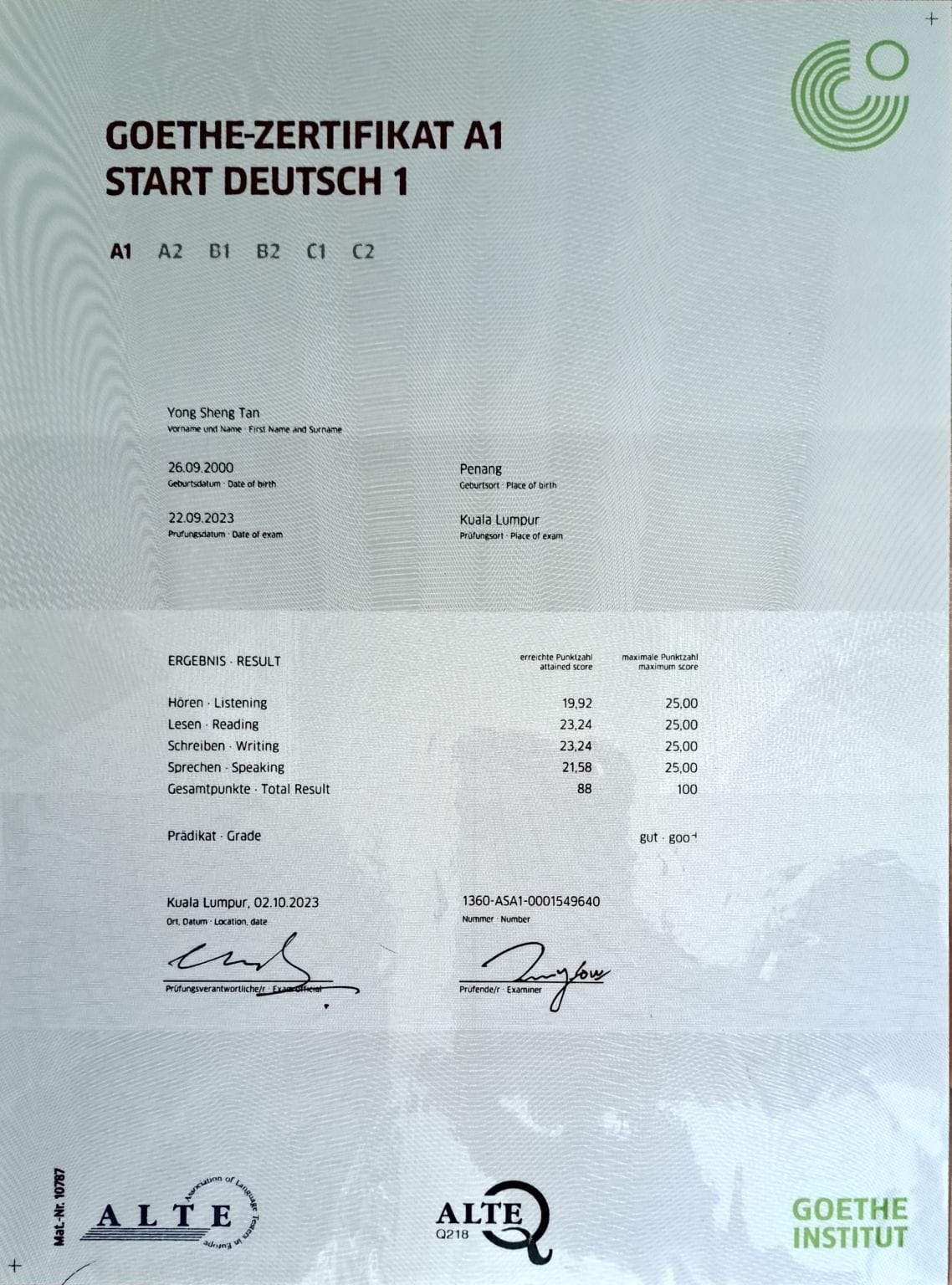
Black Shadows © 2013 -
Mentions légales/Policies
Mentions légales/Policies

Comprehending the ÖSD Certificate A1: What You Need to Know
In an increasingly interconnected world, the capability to interact in several languages has actually become an important asset. For people aiming to show their proficiency in the German language, the Austrian Language Diploma (ÖSD) offers a structured and recognized certification program. Amongst the different levels of this certification, sprachprüfung the ÖSD Certificate A1 acts as the entry point for beginners. This short article looks into the qualifications of the ÖSD A1 accreditation, its purpose, structure, and significance, along with answers to some frequently asked questions.
What is the ÖSD Certificate A1?
The ÖSD Certificate A1 is a foundational language efficiency test created to determine a prospect’s capability to communicate in fundamental German. It falls under the Common European Framework of Reference for Languages (CEFR), which offers a standardized scale for examining language proficiency. The A1 level is categorized as the starting phase, where people are expected to comprehend and use familiar everyday expressions and basic phrases focused on satisfying useful requirements.
Importance of the ÖSD Certificate A1
The ÖSD Certificate A1 has several essential ramifications for individuals seeking to boost their language skills and enhance their individual and professional potential customers. Here are a few reasons this certification is substantial:
Foundation of Language Learning: The A1 level serves as a stepping stone for learners who want to progress to higher levels of efficiency in German.
International Recognition: The ÖSD certificates are commonly acknowledged in Austria and Germany, increasing employability in German-speaking nations and reinforcing visa applications.
Evaluation of Basic Skills: The exam assesses necessary abilities in reading, writing, listening, and speaking, giving learners a clear understanding of their linguistic capability.
Structured Learning Path: Obtaining the A1 certificate sets the groundwork for learners to methodically build their language skills.
Structure of the ÖSD Certificate A1
The ÖSD Certificate A1 comprises 4 primary components that assess various language abilities:
Listening Comprehension (Hörverstehen):.
Prospects listen to tape-recorded discussions and brief texts. They need to answer questions that evaluate their understanding and capability to extract vital information.
Reading Comprehension (Leseverstehen):.
This section consists of checking out brief texts, dialogues, or advertisements, followed by concerns that check understanding and interpretation.
Composed Expression (Schreiben):.
In this part, students need to produce brief composed texts, such as completing kinds or composing basic messages, demonstrating their ability to communicate in composing.
Oral Expression (Sprechen):.
Candidates engage in a conversation with an inspector, which can include answering concerns about individual topics, describing familiar objects, or talking about everyday scenarios.
Preparing for the ÖSD Certificate A1.
Success in the ÖSD A1 examination requires appropriate preparation. Here are some pointers for effective research study:.
Research Study Materials: Utilize ÖSD-approved books, online courses, and practice tests specifically developed for the A1 level.
Expand Vocabulary: Focus on vocabulary related to daily topics such as household, tasks, foods, and pastimes.
Practice Listening: Engage with German-speaking media, consisting of podcasts, motion pictures, and songs, to enhance listening skills.
Conversation Practice: Join language exchange programs or groups to practice consulting with native speakers or fellow learners.
Mock Tests: Regularly complete practice tests to familiarize oneself with the exam format and time restraints.
Advantages of Earning the ÖSD Certificate A1.
Attaining the ÖSD A1 certificate not only verifies one’s language skills however also opens numerous opportunities for personal and expert development. Here are some benefits of holding this certification:.
Boosted Job Opportunities: Many companies in German-speaking nations worth language certification, especially at the A1 level, as it shows dedication to communication.
Admission to Language Courses: Some language schools require proof of A1 efficiency as a prerequisite for advancing to higher courses.
Confidence in Communication: The certificate increases confidence in basic communication, an essential skill for living or operating in a German-speaking environment.
Cultural Immersion: Learning the language welcomes much deeper cultural understanding, making it possible for people to connect more meaningfully with German-speaking neighborhoods.
Frequently asked question Section.
1. Who is eligible to take the ÖSD Certificate sprachzertifikat a1 exam?
The exam is open to individuals over the age of 16 who want to prove their standard knowledge of German. No previous qualifications are essential.
2. What is the passing rating for the ÖSD A1 exam?
Prospects should accomplish a minimum of 60% of the total points to pass the examination.
3. Where can I take the ÖSD A1 exam?
The ÖSD A1 exam is offered in numerous assessment centers all over the world, especially in Austria and Germany. It is recommended to check the ÖSD site for the nearby area.
4. The length of time is the ÖSD A1 certificate legitimate?
The ÖSD Certificate A1 does not expire, and students can provide it anytime to demonstrate their efficiency.
5. Can I get ready for the exam on my own?
 Yes, lots of prospects effectively prepare individually using research study materials, however participating in classes or language workshops can help with much faster discovering.
Yes, lots of prospects effectively prepare individually using research study materials, however participating in classes or language workshops can help with much faster discovering.
Conclusion.
The ÖSD Certificate A1 acts as an essential tool for those starting their journey to discover the German language. With its structured method and recognition in German-speaking regions, this certification leads the way for sprachzertifikat b1 österreich (look what i found) improved interaction skills, enhanced work prospects, and a much deeper understanding of German culture. By investing time in preparation and practice, students can attain this foundational milestone and set the stage for continued language advancement.